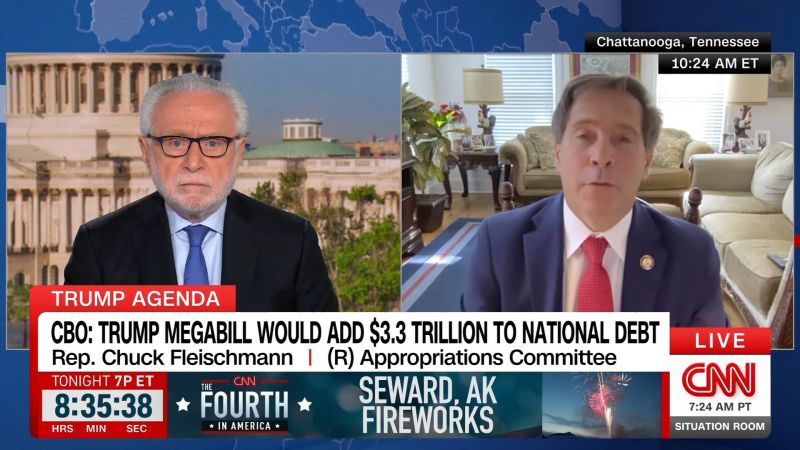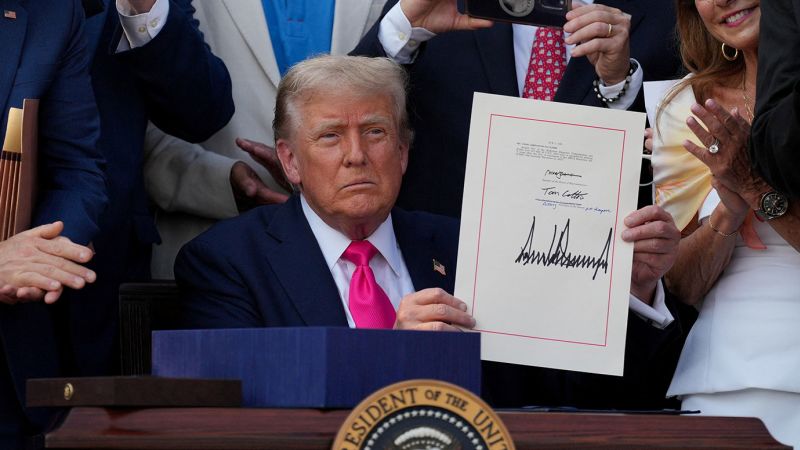Supreme Court Supports Trump’s Federal Workforce Reorganization Effort

The Supreme Court on Tuesday endorsed President Donald Trump’s initiative to implement extensive layoffs and restructuring within federal agencies. This decision temporarily overturns a lower court’s order that had blocked the president’s actions pending Congressional approval. This ruling marks another significant victory for Trump in the Supreme Court, following decisions that have made it more challenging to contest executive orders and have supported the administration’s deportation policies.
In an unsigned order, the high court noted that lower courts had impeded the administration’s plans based on a broad strategy rather than specific agency “reduction in force” (RIF) plans aimed at significantly downsizing the federal workforce. Although the vote count was not disclosed, Justice Ketanji Brown Jackson, a member of the court’s liberal faction, dissented.
Background and Legal Context
The case arises from an executive order signed by Trump in mid-February, which initiated efforts to substantially reduce the size of federal agencies—a key issue in his campaign. Various departments subsequently announced plans to lay off tens of thousands of employees. However, federal agencies are established by law, and lower courts have consistently ruled that the executive branch cannot unilaterally dismantle them or reduce staffing to levels that prevent them from fulfilling their legal duties.
“Because the government is likely to succeed on its argument that the executive order and memorandum are lawful … we grant the application,” the court stated in its brief order. “We express no view on the legality of any agency RIF and reorganization plan produced or approved pursuant to the executive order and memorandum.”
This leaves open the possibility that the court might oppose a specific plan in the future if it appears to hinder an agency’s ability to meet its legal obligations.
Reactions and Implications
The lawsuit was initiated by a coalition of over a dozen unions, non-profits, and local governments, labeling it as the largest legal challenge to the Trump administration’s efforts to downsize the federal workforce. “Today’s decision has dealt a serious blow to our democracy and puts services that the American people rely on in grave jeopardy,” the coalition stated. “This decision does not change the simple and clear fact that reorganizing government functions and laying off federal workers en masse haphazardly without any congressional approval is not allowed by our Constitution.” The coalition vowed to continue advocating for the protection of critical public services.
Justice Jackson’s Dissent
Justice Ketanji Brown Jackson criticized the ruling as “hubristic and senseless.” She argued that lower court judges are better positioned to assess the situation on the ground and determine the relevant facts. “At bottom, the case was about whether the administration’s effort amounts to a structural overhaul that usurps Congress’s policymaking prerogatives,” Jackson wrote. “Yet, for some reason, this court sees fit to step in now and release the president’s wrecking ball at the outset of this litigation.”
Potential Impact on Federal Agencies
The order affects major reductions at more than a dozen agencies, including the Departments of Agriculture, Commerce, Energy, Labor, Treasury, State, Health and Human Services, Veterans Affairs, and the Environmental Protection Agency. Proposed cuts include a reduction of approximately 10,000 positions at the Centers for Disease Control and Prevention, the Food and Drug Administration, and the National Institutes of Health, according to court records. The Treasury Department proposed cutting Internal Revenue Service positions by 40%, and the Department of Veterans Affairs initially planned to eliminate 80,000 jobs, though this was later reduced to 30,000.
Justice Sonia Sotomayor, also part of the court’s liberal wing, agreed with the decision, describing it as limited. “I agree with Justice Jackson that the president cannot restructure federal agencies in a manner inconsistent with congressional mandates,” Sotomayor wrote. “Here, however, the relevant executive order directs agencies to plan reorganizations and reductions in force ‘consistent with applicable law.’”
Historical and Legal Precedents
A federal court in California had previously blocked the administration from conducting deeper layoffs, and the 9th US Circuit Court of Appeals declined to intervene. The Trump administration appealed to the Supreme Court in early June. US District Judge Susan Illston, appointed by former President Bill Clinton, wrote in May that “Presidents may set policy priorities for the executive branch, and agency heads may implement them,” but “a president may not initiate large-scale executive branch reorganization without partnering with Congress.” US Circuit Judge William Fletcher, another Clinton appointee, emphasized that “the kind of reorganization contemplated by the order has long been subject to Congressional approval.”
This story continues to develop as the coalition prepares to further challenge the administration’s efforts, aiming to safeguard essential public services and uphold constitutional mandates.






